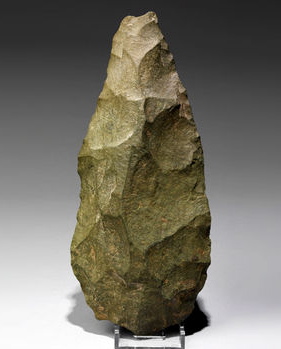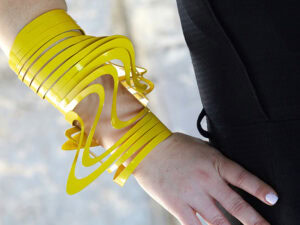
Tool Stories
Truth be told, this idea originated where all the great ones do: in a bar. I have taken a bit of poetic license to protect the identity of those involved in the initial catalyzing conversation. At a pub in South London last spring, the conversation turned to tools. Three artists and a curator of craft and design were seated around a table. First, the artists riffed on their favorite tools, extolling the virtues of a particularly prized hammer passed down through the generations and a contractor’s saw that seemed capable of any feat. Then a short detour into Heidegger: the ‘present at hand’ and the ‘ready at hand’ and the two sides or states of toolness. Another round and we made it back to the oldest tool of all: the stone hand axe, specifically the 1.2 million-year-old Olduvai Handaxe at the British Museum.

The Curator:
One tool for two million years. It makes you wonder: why did the same tool endure for so long? Would it be possible to survive with one tool today? I mean, could any of you ever reduce your practice to just one tool?
The Woodworker:
Preposterous. (Heads back to the bar.)
The Metalsmith:
I suppose that depends on how you define ‘the tool.’ Is it an object, a body part, a system, a machine? For example, if the hand counts as a tool then we are okay. The hand is the tool that begat every other tools.
The Jeweler (leaning in):
Here I speak from long experience. Sometimes when I need a new idea, a new direction, I take away all my tools but one. A surefire solution to whatever it is we call the artist’s equivalent of writer’s block.
This conversation and this last comment struck a chord. I was in London to work on two research projects. The first considered the impact of constraints on artistic practice. The second studied the relationship between artists and their tools. As a historian of making, I was fascinated by the fact that British law prohibited the courts from seizing a maker’s tools if that maker was sued for debt. This shows just how vital a kit of tools was to starting over in business, but it also reflects the long-standing intimacy between maker and tool, the fact that to take away a tool was in some way to remove a part of the maker himself.
In the playful back and forth over the handaxe and the jeweler’s whispered comment, I found a way to explore these interests with contemporary makers. In April 2011, I sent this video on behalf of the Chipstone Foundation to eighteen artists from around the world who work in a variety of media. Composed by London artist Nicola Probert, the film is an invitation. It invites the recipient to make a work of art with one tool alone and to make a short video reflecting on this process. Of the eighteen artists who received this film, sixteen signed on to participate in the show. (Their submissions are available online.)
Ultimately, the diverse body of work produced for The Tool at Hand raises more questions than it answers. Does the artist control the tool or does the tool create parameters for the artist? Do constraints fuel or limit creativity? What informs tool use: history, personality, the still-present traces of early human DNA? Why do makers take such delight in their tools? What is the relationship between studio production and factory production? Finally: what is a tool and what counts as a single tool?
Opinions on this last point were particularly wide-ranging. Some used hand tools and some used machines. Some picked up a tool at the local hardware store and some fabricated tools from scratch. One artist, David Clarke, even used his oven.
But alas, no handaxe.





